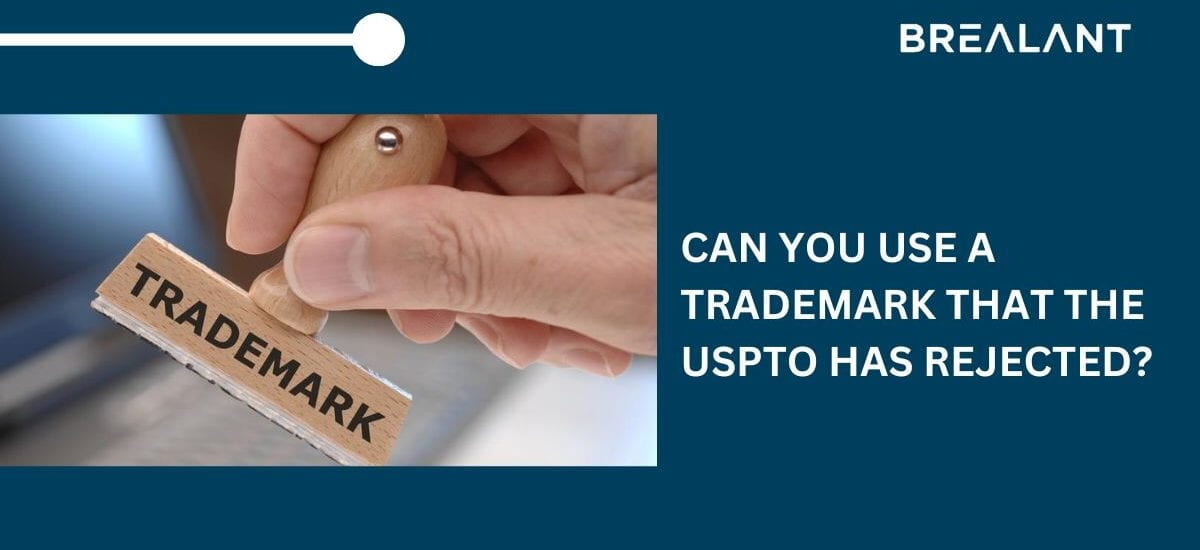
Are you using a trademark that the United States Patent and Trademark Office (USPTO) has rejected? A trademark can be successfully registered with the USPTO if it is descriptively identifiable, not misleading, and does not infringe on another’s rights. However, there have been occasions where the USPTO has rejected trademarks because they are not legally protectable. What options do you have if this is the case for your trademark?
Sometimes, even the best ideas can’t get off the ground because of a trademark issue. Whether it’s because of a conflict with another trademark, public association with a disparaging term, or simply exceeding the allowable use and registration limits, many concepts, products, and services fall victim to rejection by the US Patent and Trademark Office (USPTO).
What are the reasons for rejections?
Typical explanations the USPTO may deny your application include:
- A generic word or phrase is anything you’re attempting to trademark.
- The brand’s resemblance to another registered trademark is too strong and could confuse;
- the trademark only describes the product,
Trademarks can be legally protectable if they are descriptive, not misleading, and do not fall within one of the specific infringements Byzantine Simon claims. To determine whether a trademark is legally protectable, an examiner must look at three factors:
- whether the mark is descriptive;
- whether it is distinctive;
- whether it is likely to confuse consumers.
If any one of these factors is absent from your trademark registration application, then it may be rejected by the USPTO.
If the USPTO has rejected your trademark, there are various options that you may have. You may file for a new mark or use an amended application. Additionally, you may abandon the mark altogether in light of the disapproval. It is important to know your legal rights to make informed decisions.
What is the solution?
You have two options: submit a new trademark application or make specific changes to your existing registration. You are supposed to file a new trademark with USPTO with certain amendments. But before filing for a new trademark, you should first do thorough research for it. When applying for a new trademark, you must first check to see if any comparable trademarks already exist to ensure your changed brand is distinct enough to be registered. A new trademark application would otherwise satisfy all the conditions, so you must also ensure that it is not generic. To register your amended brand, you can get assistance from an accomplished intellectual property attorney by creating a trademark registration application. Or,
You can preserve your original filing date and pay a little less money by modifying your registration, which has the advantage of preserving your original filing date. If your request is granted, your change will replace your original registration as the drawback of updating your registration. This will be adequate for those who want to get rid of their old trademarks. But if you want to ensure that you’re existing and new trademarks are equally protected, you might need to submit a new application.
The USPTO is tasked with protecting the intellectual property rights of Americans. They review filed trademarks, deny applications based on valid grounds, and promote greater creativity and innovation through their decisions. It is important to understand that while the USPTO has wide discretion over certain decisions, it cannot arbitrarily reject marks. Rather, they must use sound legal principles in making these determinations.
There are a few scenarios where the USPTO may reject your trademark. In some cases, the USPTO may reject your trademark application because it does not meet the required standards. In other cases, the USPTO may refuse to register your trademark based on its prior use. If your trademark has been previously used without authorization, the USPTO may be unwilling to approve it again.
Although your trademark may have been rejected, it does not mean it is worthless. You can still take advantage of its benefits by making some minor adjustments. This could include changing the name, adjusting the logo, or altering how you use the mark.
Conclusion
The USPTO is a government office responsible for rewarding trademarks with registrations and renewals. If you submit a trademark application and it is rejected, there are still several ways to use the mark. These include: filing for an extension of time (see instructions on the USPTO website), filing for a cancellation of the mark, or using the mark differently.
You may make the finest choice for your company with the assistance of a knowledgeable team. With regard to intellectual property issues, including trademark revisions, Brealant has assisted numerous small and medium-sized firms.

